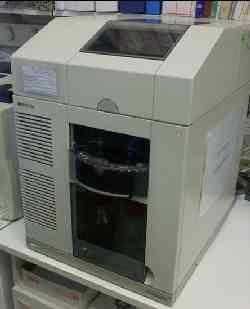Physical method based on the mobility of charged particles within a capillary on the effect of electric field, called also capillary zone electrophoresis, abbreviated as CE or CZE. The migration velocity of the analyte is determined by its electrophoretic mobility and by the electroosmotic flow of the medium. The migration depends on the properties of the analyte (electric charge, shape and size of the molecules) and on the properties of the electrolyte (type, ionic strength, pH, viscosity, additives). The primary mode of detection is UV-Vis. The CE can be coupled to mass spectrometer and fluorescence detectors, too. Cations and anions in surface and subsurface as well as in waste water samples in addition to aqueous soil extracts can be measured. Compared to ">ion chromatography, this technique is less sensitive, faster and demands less sample volume. Both anions and cations can be measured within the same capillary by changing the polarity of the electric field. The sample preparation is simple (filtration).
Pharmacopoea Ph.Hg
